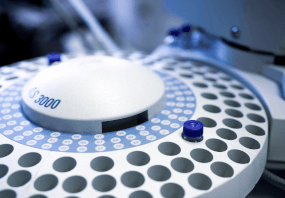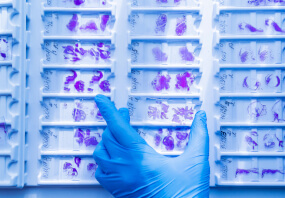General description
Cofilin is a member of the actin depolymerizing factor/cofilin family. Among all members, cofilin-1 is the predominant isoform. It is located on human chromosome 11q13.
Cofilin is a small phosphoinositide-sensitive actin-binding protein capable of depolymerizing actin-filaments in vitro. In mammals it has two isoforms: non-muscle (NM-CF, CF-L1) and muscle (M-CF, CF-L2). The protein is ubiquitiously present in tissues of eukaryotes and is especially abundant in neuronal tissues. It can shuttle between the cytoplasm and the nucleus in response to various stresses or signals, and may translocate from the cytoplasm to the plasma membrane in various cells.
Specificity
Reacts with muscle and non-muscle cofilin.
Immunogen
Synthetic peptide corresponding to human cofilin sequence, with N-terminal cysteine added, conjugated to KLH. The corresponding sequence is identical in pig and rat non-muscle cofilin and differs by three amino acids from that of human and chicken muscle cofilin.
Application
Anti-Cofilin antibody has been used:
- for immunostaining of chick neurons. It is used as a primary antibody
- for western blotting of protein isolated from mouse hippocampi cells, rat brain samples, human acute lymphoblastic T-cell line, human brain samples, head and neck squamous cell carcinoma cell line, HEK293T cells and renal epithelial cell lines
- for immunofluorescence studies in tissue samples from human brain
Biochem/physiol Actions
Cofilin binds stoichiometrically to monomeric G-actin and actin protomers. Cofilin intercalates between longitudinally associated actin monomers within the filament. Under specific conditions, It cleaves the filaments and accelerates actin subunits dissociation from their ‘pointed′ ends. It is essential for viability and vital for many cellular processes involving actin remodeling, such as motility at the leading edge of cells, polarized cell growth, endocytosis, phagocytosis, cellular activation, cytokinesis etc. Cofilin activity is regulated through reversible phosphorylation and dephosphorylation. In phosphorylated form, it is inactive and unable to bond with actin. Phosphorylation of cofilin is regulated by at least four protein kinases: LIM Kinase-1, LIM Kinase-2, Testicular Kinase-1, and Testicular Kinase-2. S-nitrosylation of cofilin is involved in vascular endothelial growth factor (VEGF)-stimulated endothelial cytoskeleton remodeling and migration. Over-expression of cofilin suppresses growth and invasion of non-small cell lung cancer. Dysregulation of cofilin is associated with neurodegeneration.
Physical form
Solution in 0.01 M phosphate buffered saline, pH 7.4, containing 15 mM sodium azide.
Storage and Stability
For continuous use, store at 2-8 °C for up to one month. For prolonged storage, freeze in working aliquots at -20 °C. Repeated freezing and thawing, or storage in frost-free freezers, is not recommended. If slight turbidity occurs upon prolonged storage, clarify the solution by centrifugation before use. Working dilutions should be discarded if not used within 12 hours.
Disclaimer
Unless otherwise stated in our catalog or other company documentation accompanying the product(s), our products are intended for research use only and are not to be used for any other purpose, which includes but is not limited to, unauthorized commercial uses, in vitro diagnostic uses, ex vivo or in vivo therapeutic uses or any type of consumption or application to humans or animals.
Shipping Information:
Dry Ice Surcharge & Ice Pack Shipments: $40
More Information: https://cenmed.com/shipping-returns
- UPC:
- 51201651
- Condition:
- New
- Availability:
- 3-5 Days
- Weight:
- 1.00 Ounces
- HazmatClass:
- No
- MPN:
- C8736-.2ML
- Temperature Control Device:
- Yes












